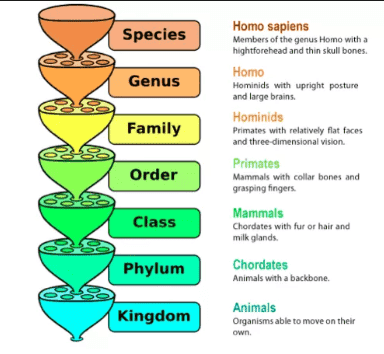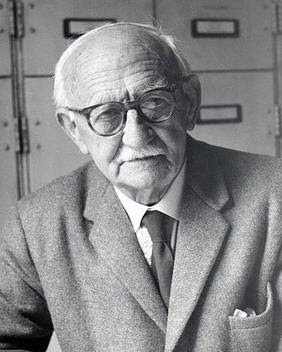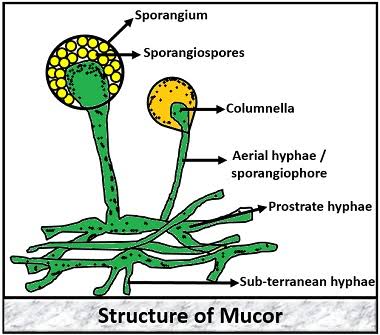EVOLUTION OF SPOROPHYTES IN BRYOPHYTES
According to the complexity of structure, the sporophye of bryophytes may be arranged in a series between the simple and the most elaborate. The series start with the simple sporophyte of riccia, runs through that of sphaerocarpos , anthoceros, marchantia and finally ends in a highly complex sporophye of funaria and pogonatum. However, the evolution of sporophytes has been explained with the help of two theories put forward by botanist----
a) Theory of sterilization
b) Reduction Theory
1.Theory of Sterilization
This theory was put forward by BOWER and supported by Cavers, Campbell and Smith. This theory illustrates that a natural advance in the progressive elaboration and complexity of the sporophyte. The fundamental of principle upon which he formulated his argument is " the progressive sterilization of the potentially fertile cells (sporogenous tissue)" .
Instead of forming spores and serving a propogating function they remain sterile. These sterile cells are put to the other uses such as nutrition , support , dehiscence , dispersal etc. This hypothesis of Bower is called "Theory of Sterilization".
Instead of forming spores and serving a propogating function they remain sterile. These sterile cells are put to the other uses such as nutrition , support , dehiscence , dispersal etc. This hypothesis of Bower is called "Theory of Sterilization".
The detail process of Sterilization of some of the important genera discussed as follow-
(a) Riccia Sporophyte- In riccia, zygote divide and redivides to farm a spherical mass of 20-30 undifferentiated cell. Periclinal segmentation forms an inner mass of cell called endothecium and outer single layer amohithecium. The amohithecium forms the single layered capsule wall. The endothecium forms the central mass of sporogenous tissue. Practically , all the sporogenous cells are fertile and develop into spores. However, few of them undergo degeneration to form the nurse cells.
The sporophye of riccia is simplest among all of the bryophytes and has least amount of sterile cells. The entire embryo froms the spore producing capsule. There is not foot and Seta. It is just a spore producing organ without any distributing function.
(b) Marchantia Sporophyte- Sterilization of fertile cells is more advanced in the genus. Half of the embryo divided from the hypobasal regions remians sterile. It forms the foot and Seta. The upper epibasal half is fertile and forms the spore producing capsule. The sterile cell elongate, develop spirally thickened walls and become the elators. A few of the cells of sporogenous cells at the top may be differentiated into sterile, apical cell.
The capsule of Marchantia has both spore producing and spore distributing body. It illustrates a step further in the progressive sterilization of the sporogenous tissue.
(c) Anthoceros Sporophyte- It illustrates a step further than riccia and Marchantia in the progressive sterilization ot the potentially of fertile tissue. The endothecium cells become completely sterile and forms a group of cells known as columella. The sporogenous cells arise from the innermost layer of the amohithecium.
It surrounds the columella. The sporogenous cells become differentiated into spore mother cell and pseudo-elaters. The archegonium of anthoceros is extremely reduced. The outer amohithecium develops into several cells layer thick capsule wall. The capsule wall develops a well ventilated photosynthetic tissue protected by the Epidermis.
It surrounds the columella. The sporogenous cells become differentiated into spore mother cell and pseudo-elaters. The archegonium of anthoceros is extremely reduced. The outer amohithecium develops into several cells layer thick capsule wall. The capsule wall develops a well ventilated photosynthetic tissue protected by the Epidermis.
(d) Funaria Sporophyte- In funaria major portion of the Sporophyte remain sterile to form the foot and Seta. The capsule is differentiated into central column of andothecium surrounded by many layered amphithecium. The inner layer of the endothecium forms the sterile columella and the superficial cell form the sporogenous tissue. Thus the archesporium arise from the outermost layer of cells of the endothecium.
It is thus extremely reduced and consists of single layer of fertile tissues. The amohithecium become differentiated into the Epidermis , photosynthetic tissue of the capsule wall and the outer spore sac.
The Bower theory of sterilization gives a clear explanation of the evolution of sporophye into upward direction. This theory is more conveincing and reliable.
2. REDUCTION THEORY
This theory was put forward by kashyap, church, Goebal and Evans. They hold that the evolution of sporophye has been in downward direction. They hold the fact that evolution of Sporophyte is retrogressive evolution. They mainly based their theory on the reduction of different organs which result in the simplification of Structure of Sporophyte.
On the basis of this view the simplest type of Sporophyte of riccia is considered as the most advance one.
On the basis of this view the simplest type of Sporophyte of riccia is considered as the most advance one.
The significant steps in the reduction series are-
- Simplification of dehiscence appratus.
- Reduction of the green photosynthetic tissue in the capsule wall.
- Disappearence of stomata and intercellular spaces.
- Increase in the thickness of capsule wall.
- The gradual elimination of foot and Seta.
- All these changes accompanied by the progressive increase in the fertility of sporogenous cells. The changes eliminates the presence of sterile cells and elater in the capsule.
Evidence from comparative morphology and experimental genetics support the view that the simple Sporophyte of riccia is an advanced but a reduced structure.
 |
| Source wikipedia |













0 Comments
If you have any query let me know.